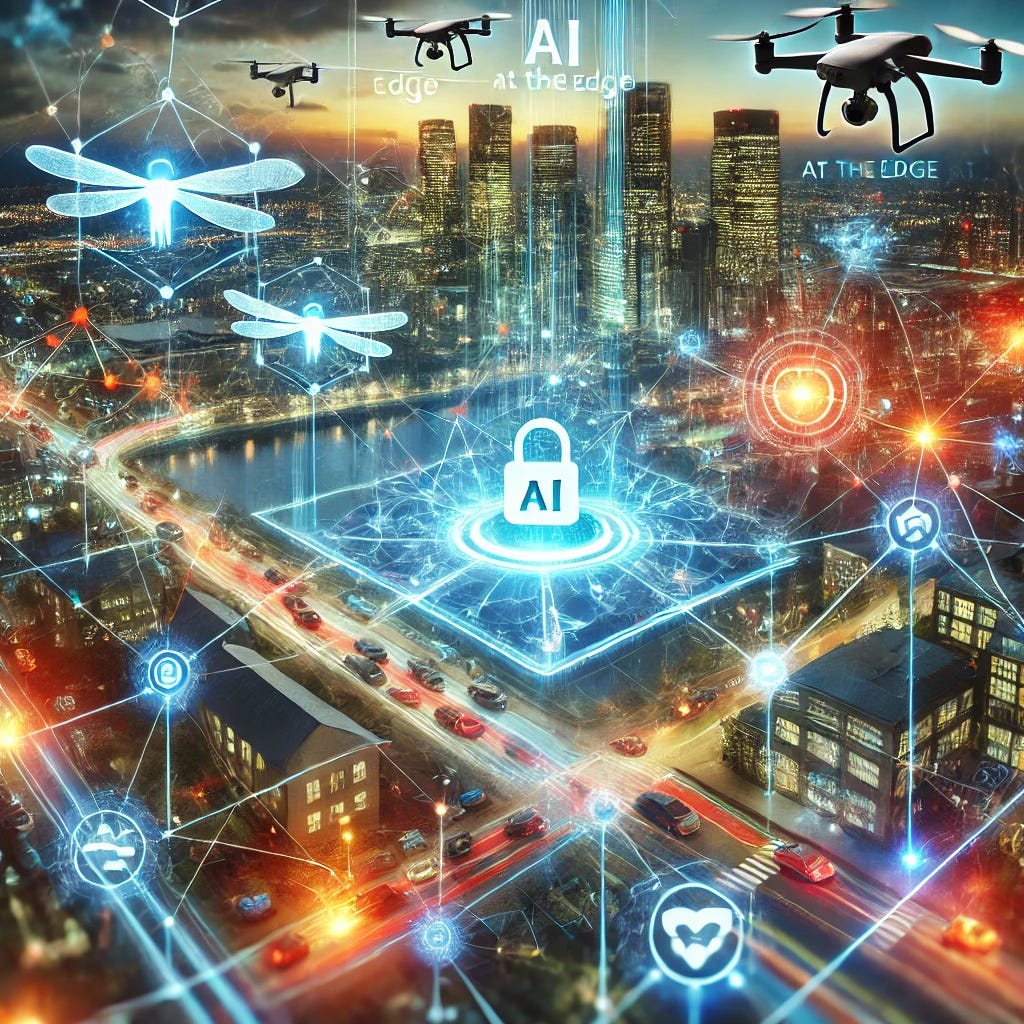Edge AI: Bringing AI to the Edge of Innovation
"Discover how Edge AI transforms industries by putting real-time intelligence in the palm of your hand, faster and smarter than ever before."
Edge AI: Bringing AI to the Edge of Innovation
The rise of Artificial Intelligence (AI) has transformed industries, making processes smarter, faster, and more efficient. However, as technology evolves, so do the demands of its application. Enter Edge AI—a revolutionary development that brings AI computing closer to where data is generated, cutting down latency, reducing bandwidth, and enhancing the speed of decision-making processes. By integrating AI capabilities directly into edge devices, Edge AI is shaping the future of smart technology, leading industries into a new era of innovation.
What is Edge AI?
Edge AI refers to the practice of running AI algorithms locally on a hardware device, without relying on cloud-based data centers. Traditional AI processing often requires large amounts of data to be sent back and forth to a cloud server, resulting in latency, increased bandwidth use, and security risks. Edge AI eliminates these concerns by pushing AI to the "edge" of the network, where devices such as smartphones, sensors, cameras, and autonomous vehicles can process and analyze data in real time, directly on the device.
This shift in computation is a game changer for industries like healthcare, automotive, manufacturing, and retail, where real-time processing is crucial for operational efficiency. The beauty of Edge AI lies in its instant insights, which can drive immediate action, leading to faster decision-making and improved performance in various applications.
How Edge AI is Driving Innovation
Edge AI's potential to reshape industries lies in its ability to harness the power of AI locally, allowing companies to innovate in real-time scenarios. Here are some sectors where Edge AI is transforming the landscape:
Healthcare
In healthcare, Edge AI is powering wearable devices that monitor patients in real time, analyze health data on the fly, and provide insights without requiring constant connectivity to the cloud. This reduces the delay in medical diagnoses and enables instant intervention, which could be life-saving in critical situations.
Autonomous Vehicles
Self-driving cars depend on vast amounts of data processed in real time to make split-second decisions. Edge AI allows vehicles to analyze sensor data on the spot, facilitating faster responses to road conditions, pedestrian activity, and other environmental factors.
Manufacturing and Industry 4.0
The manufacturing sector is leveraging Edge AI to power predictive maintenance, smart monitoring, and process automation. This enables machines to autonomously detect faults and self-correct without human intervention, significantly reducing downtime and increasing efficiency.
Retail
In retail environments, Edge AI is enabling smart stores where customer behavior is analyzed in real time, offering personalized experiences without the need for human involvement. AI-powered cameras can detect customer preferences, automate stock replenishment, and enhance security measures all in one go.
Smart Cities
Edge AI is also crucial for building smart cities where sensors, traffic cameras, and drones collect and process data to manage traffic, improve public safety, and optimize energy consumption. This leads to sustainable urban development with efficient resource management.
Advantages of Edge AI:
Low Latency
Edge AI drastically reduces the delay in data processing since information doesn't need to travel to and from distant cloud servers. This is especially critical in applications requiring real-time responses, such as autonomous driving, industrial automation, and remote surgery.
Enhanced Security
By keeping data processing localized, Edge AI minimizes the security risks associated with sending sensitive information over the internet. This protects confidential data and reduces the chances of cyberattacks.
Reduced Bandwidth and Costs
Edge AI minimizes the need for constant cloud communication, which reduces bandwidth usage and cloud storage costs. This makes AI-driven solutions more cost-effective, especially in IoT environments with numerous devices.
Energy Efficiency
Devices running Edge AI can operate more efficiently by performing AI tasks locally. Since these devices don’t have to rely on continuous communication with the cloud, energy consumption is reduced, making Edge AI a more sustainable option.
Scalability
With the exponential growth of IoT, Edge AI provides a scalable solution to process and analyze vast amounts of data generated by connected devices. This scalability makes it easier to manage and integrate AI across different platforms and industries.
Challenges to Overcome
Despite its incredible potential, Edge AI also faces challenges. One of the primary obstacles is the limited computing power of edge devices, which may not be able to handle large-scale AI models like those typically run on cloud servers. However, advancements in hardware and AI optimization techniques are rapidly closing this gap. Another challenge is the interoperability of various devices and platforms in an IoT ecosystem, which can complicate seamless data integration.
Furthermore, edge security remains a concern as AI processing moves closer to the source of data generation. Manufacturers must ensure robust security protocols are built into edge devices to prevent vulnerabilities in an AI-powered environment.
The Future of Edge AI
As industries evolve and demand faster, more reliable, and efficient AI solutions, the adoption of Edge AI is poised to accelerate. With its ability to bring AI directly to the source, enabling smarter devices and real-time processing, the technology is transforming businesses, industries, and everyday life. In the coming years, expect Edge AI to become an integral part of IoT ecosystems, autonomous systems, and smart city infrastructures.
Edge AI represents the next frontier of innovation, offering a compelling glimpse into the future of artificial intelligence and how it will seamlessly integrate into our daily lives, making the world smarter, faster, and more efficient. As we continue to push the boundaries of AI, the edge is where the most transformative changes will happen, driving industries and societies toward a brighter, more intelligent future.
Rameshkumar Muthusamy
IT Specialist | Cloud Architect
Join me on this journey of innovation and growth!


